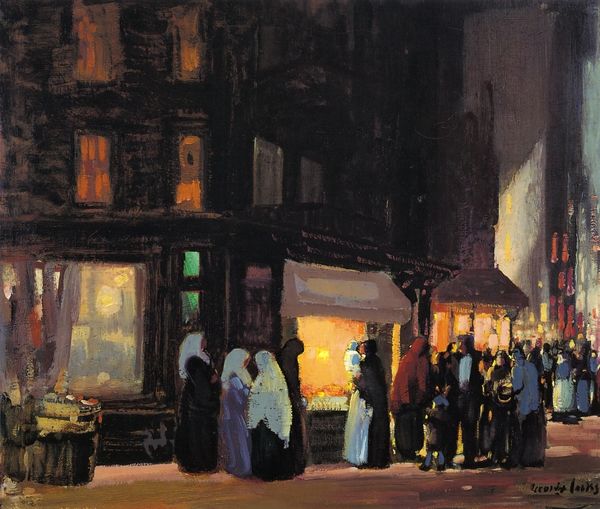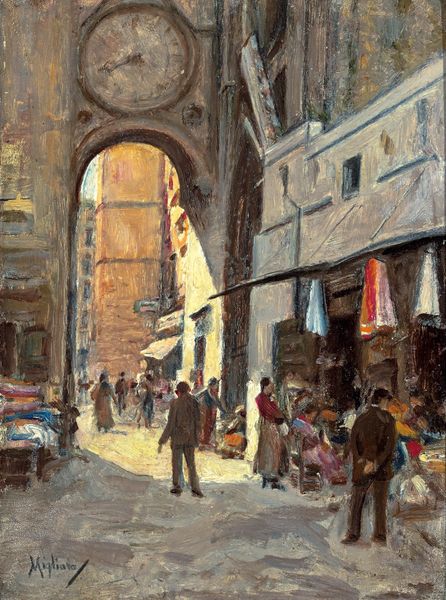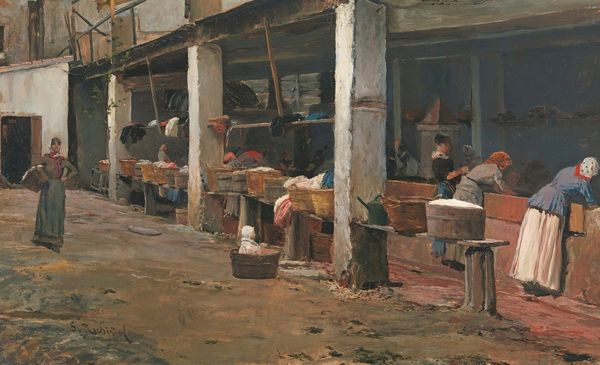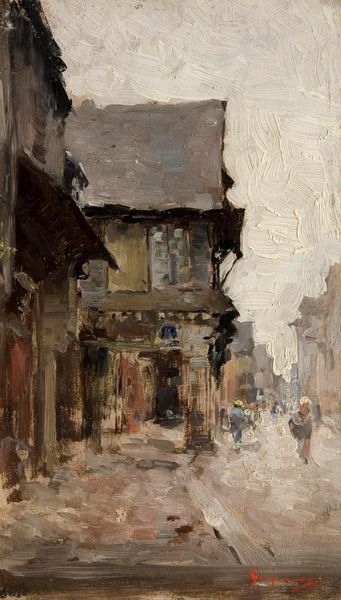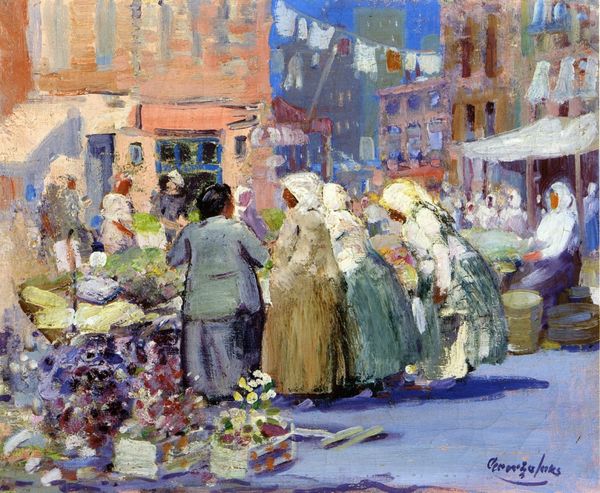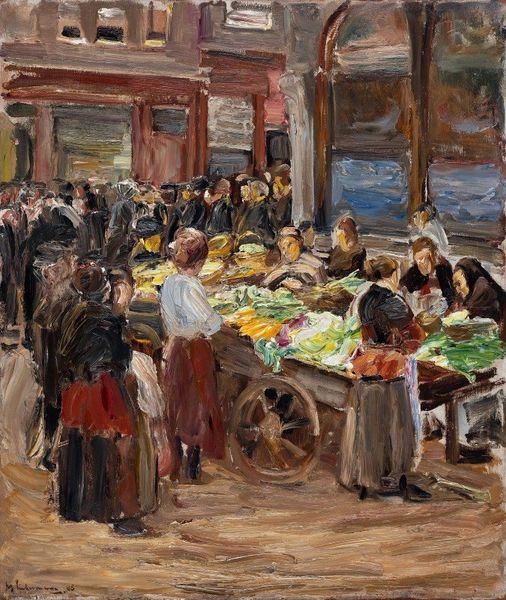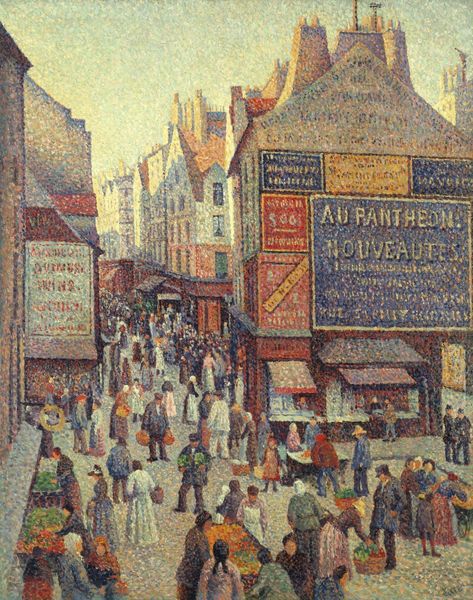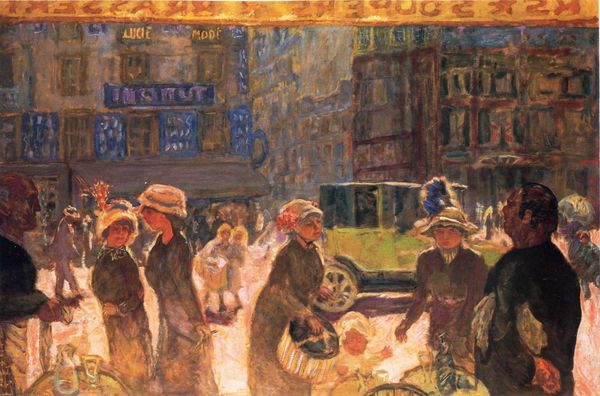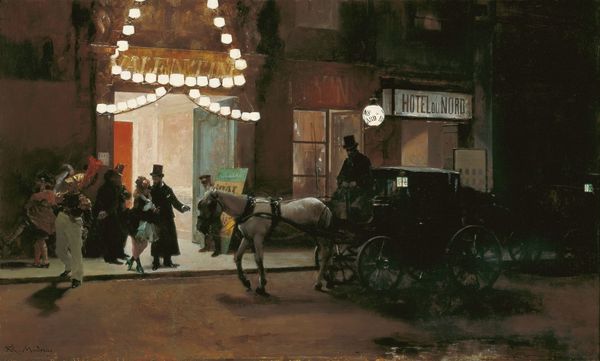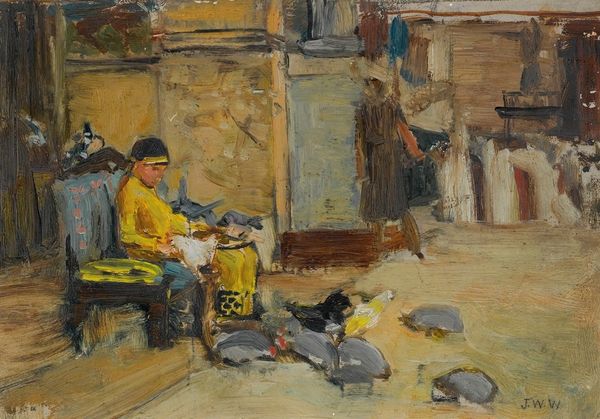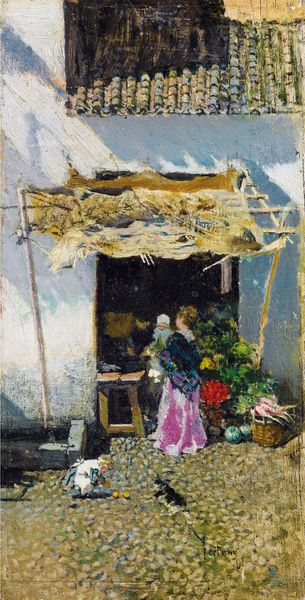
oil-paint, impasto
#
tree
#
impressionist painting style
#
oil-paint
#
oil painting
#
impasto
#
underpainting
#
ashcan-school
#
cityscape
#
genre-painting
#
street
#
realism
Copyright: Public domain
Curator: There's a wonderfully murky, almost theatrical light in George Luks's 1905 oil painting, Allen Street. It hangs here in the Hunter Museum of American Art. Editor: Yes, it initially feels quite oppressive to me, actually. A dim, crowded street scene almost entirely in shadow, punctuated only by these intense pockets of artificial light spilling from the shops. The impasto gives everything a restless texture. Curator: That artificial light, and the items spilling out onto the street--they become crucial signifiers in Luks’s work. The scene presents the chaotic atmosphere of early 20th-century immigrant life on New York’s Lower East Side. He, along with other artists of the Ashcan School, deliberately depicted working-class life at a time when academic art glorified the upper classes. Editor: I see the shawls on the women in the foreground, the piles of ornate carpets and furniture--almost props assembled for a play, bathed in that vivid, stage-like lighting you mentioned. To me, the goods almost symbolize cultural memory being bartered or preserved. Curator: Precisely! Consider also that this street, teeming with Eastern European Jewish immigrants, stood at the heart of debates about assimilation and social reform. The everyday activities depicted are loaded with complex social and political undercurrents. The vendors, for example. What meanings might the merchandise contain for both sellers and prospective customers? Editor: The stark contrast between the dimly lit street and those luminous shop interiors also sparks my imagination. It sets up this powerful symbolic duality of a tough, working life on the streets contrasted with aspirational dreams fostered by consumerism, as suggested by those mannequins on display within. The symbol of the staircases leading to a world just beyond reach. Curator: And his choice of subject itself made a powerful statement at the time. By choosing this gritty, everyday reality, Luks validated the experiences of a segment of the population that was often overlooked or actively marginalized by mainstream society. Editor: Well, looking at it now, beyond its aesthetic impact, one certainly starts to sense the profound human narratives embedded within this scene, with its suggestive use of light and shadow. It’s less a landscape and more of a societal record. Curator: Indeed. “Allen Street” prompts us to consider whose stories we tell and whose stories remain untold in the broader history of art.
Comments
No comments
Be the first to comment and join the conversation on the ultimate creative platform.

